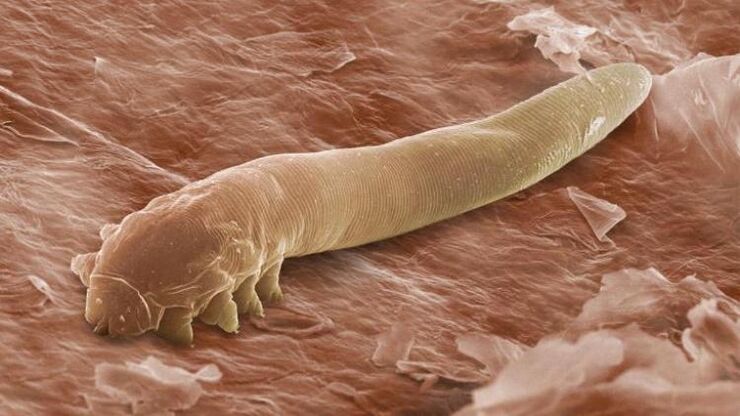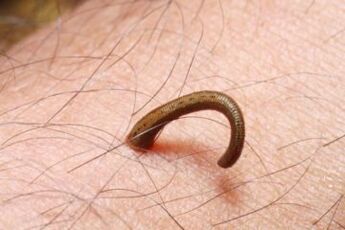
When we hear about parasites, we often imagine helminths, but in fact today their number is large.
Many of them can be found in the upper layers of the epithelium and subcutaneous fat and remain invisible to the wearer.
The subcutaneous worm can enter the human body: through tactile contact with infected people; of blood-sucking insects carrying parasitic larvae of animals.
The main feature of such an invasion is the difficulty in detecting the pathology, since at first the infection can be disguised as other somatic diseases.
The main signs of the presence of this type of parasite in the body are severe weakness, reduced performance and a constant desire to scratch the skin. When these signs appear, it is advisable to contact specialists: a therapist, a dermatologist, an allergist, an infectious disease specialist. The joint work of doctors and the diagnostic methods they use in their work help to identify the presence of subcutaneous invasion in the body in time.
Types of helminths
There are a number of subcutaneous worms that can cause a lot of trouble with their appearance. It's possible to spot their presence if you pay attention to certain symptoms. With timely diagnosis of the disease, getting rid of unwanted guests will be much easier.
To get an idea of how to quickly recognize their presence, we recommend that you familiarize yourself with the most popular representatives:
filariasis
This type of helminthiasis is found exclusively in tropical areas. Therefore, be as careful as possible when traveling, picking it up will not be difficult.
Pathogens are a great danger, since the duration of the incubation period can be 5-7 years while actively multiplying. They show no signs of their presence and absorb nutrients and vitamins in the body over the years.
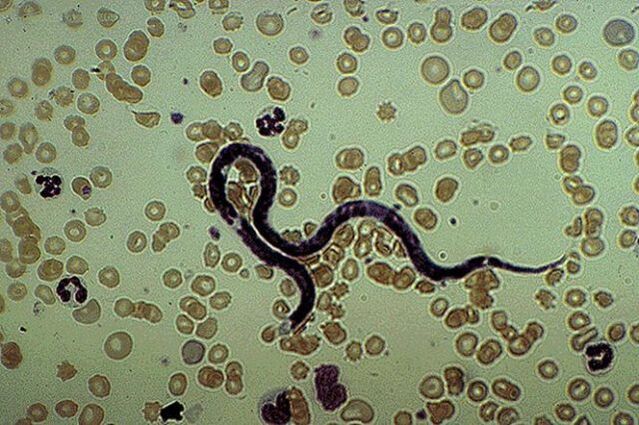
Dracunculiasis
Parasitosis can overtake the future carrier in helminth-infected water. It is impossible to determine the presence of larvae of this parasite in the water with the naked eye, moreover, neither the device nor special analyzes can determine. The danger lies in the fact that an inconspicuous larva can reach a meter when fully grown. As a rule, infection with dracunculiasis leads to death.
It must be understood that death is due to the fact that a meter-long adult worm occupies a large part of the stomach and easily enters the lungs, blocking access to oxygen supply. However, as a rule, pathogens are located in the lower extremities, so deaths in modern medicine are quite rare.
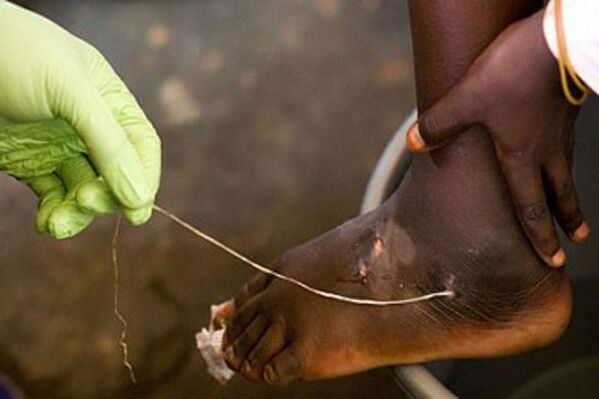
scabies
This type of disease is by far the most popular. It will not be an exaggeration that perhaps every second inhabitant of the planet has encountered this unpleasant disease. The main symptom of this disease is constant itching on the skin.
If you look closely, you can tell exactly where the worms are. At the site of their localization, you can observe noticeable redness and irritation of the skin. In addition to severe itching, unpleasant symptoms are no longer observed in an infected person.
On a note.Transmission occurs from the sick to the healthy, through physical contact and through the use of the same things.
Diagnosis is almost impossible without the availability of special devices, it is possible, as already mentioned, only to determine the location of their mass accumulation. The cause of irritation is explained by the fact that parasitic mites get under the epithelium, disturbing the upper layer of the epithelium, leaving noticeable traces.
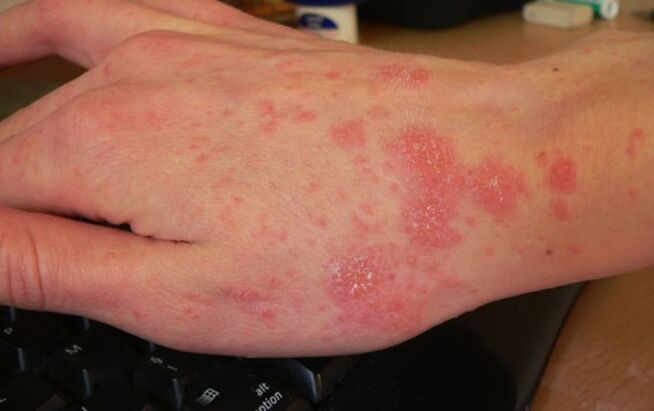
demodicosis
Pathogens prefer sebaceous glands as a habitat. Their appearance is accompanied by purulent formations on the face, which are so easily mistaken for acne. The more intensively the parasite develops, the more noticeable it is on the face. In addition to abscesses, one more symptom should be talked about, which can seem even more unpleasant - eyelash loss.
Attention.Diagnosis of this parasite is quite easy compared to other species. An experienced doctor will not even prescribe special tests to determine the presence of helminthiasis, it is enough for him just to conduct a visual examination of the patient. It is also unpleasant that the treatment lasts for several years. Getting rid of the disease is quite difficult, therefore, even with constant treatment, it can take more than a year.
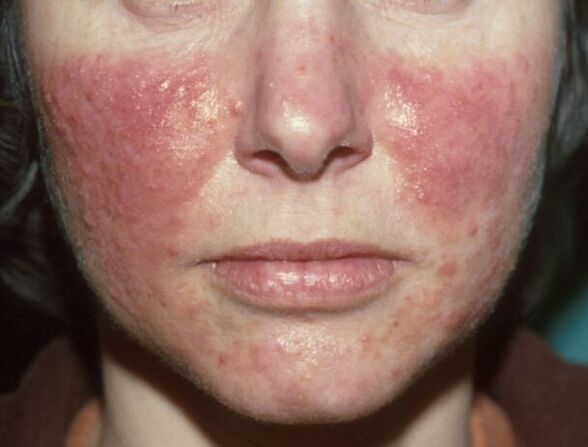
dirofilariasis
These parasites are transmitted to humans through physical contact with an infected animal, usually carried by our pets. Roundworms penetrate the human body fairly quickly, one of the carriers can be a mosquito.
Noticing this is quite simple, the bite becomes dense, inflammation and itching appear. The parasite settles in the body and begins an active life. The most important symptom that allows you to immediately make an accurate diagnosis is the feeling of stirring.
This is because adults are free to move around. Cases have been recorded when infected people saw a worm under the skin, and it can also come out through the mucous membrane of the eye.
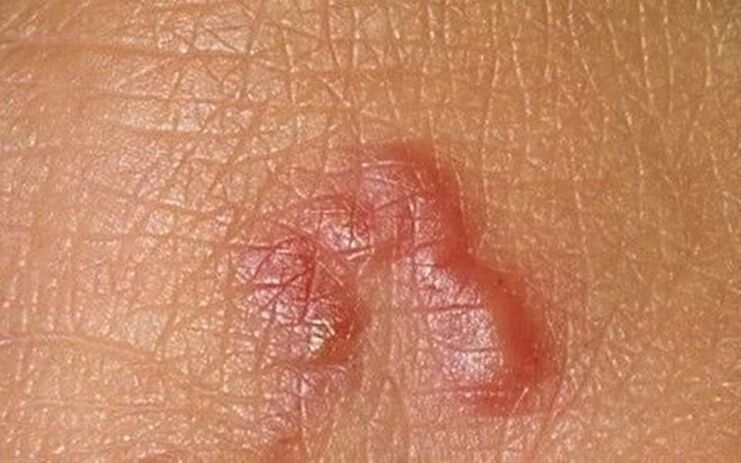
strongyloidiasis
The larvae of this parasite easily penetrate the epidermis, for this it is enough just to walk on the ground with bare feet.
In addition to severe itching, redness and noticeable inflammation, the skin of the infected person is covered with red blisters.
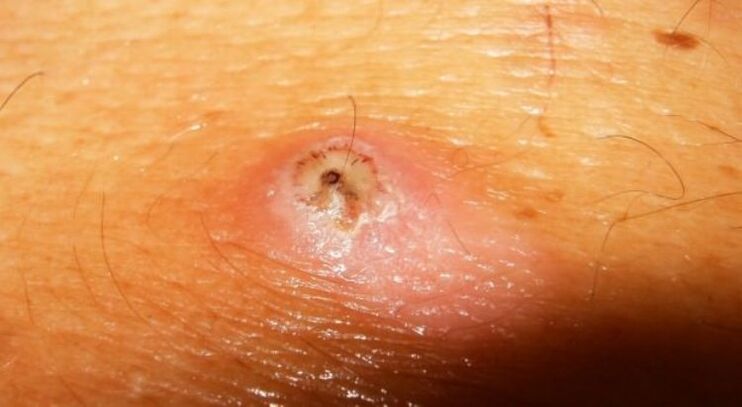
schistosomiasis
The pathogen occurs in Africa and Asia and lives exclusively in fresh water. Easily penetrates the human body. It is preferably found in human skin or in the urogenital system. During its life, it releases products toxic to humans. Toxins seriously disrupt the body, causing severe poisoning.
The appearance of this or that parasite is accompanied by certain symptoms, so an experienced doctor usually makes the diagnosis even before receiving the results of a full medical examination. The survey aims not only to confirm his presence, but also to determine his exact location, as well as the approximate number of people.
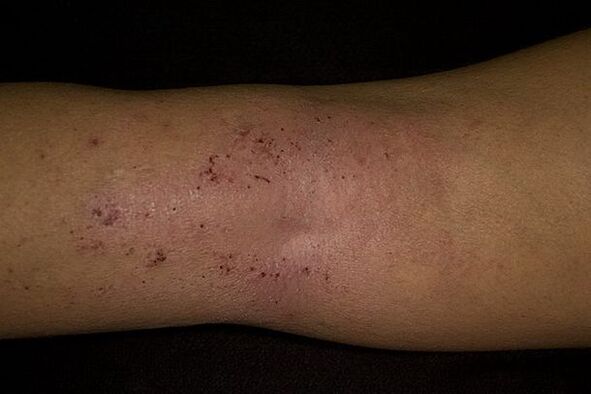
symptoms
Which symptoms appear depends on which parasites the person is infected with. There are significant differences, but most of the symptoms are typical for subcutaneous worms. Let's highlight the main symptoms:
- skin lesion. It can manifest itself in the form of a severe rash, redness, acne, severe itching, in some cases traces of worms are visible.
- General malaise. Not only toxic waste products can affect the general condition of the patient, it should be understood that the worms feed on nutrients from the carrier's body, while the carrier's body does not receive any useful substances. In this regard, weakness increases, a person quickly gets tired, fever and insomnia can be observed.
- Often worms penetrate other vital organs, thereby disrupting their work.
- Among subcutaneous helminths, individuals are often found, the movement of which is well perceived by the wearer.
filariasis
Primary symptoms that may persist for the first few years include:
- urticaria with the appearance of extensive red spots;
- severe itching;
- temperature rise;
- feverish condition.
After a period of time, the primary symptoms are replaced by more serious manifestations, such as:
- eczema, warts, ulcers;
- sleep disorders (increased drowsiness, insomnia);
- persistent migraines;
- subcutaneous nodes;
- Some people make themselves felt by examining the patient's eye.
For your information.Such a condition requires serious medical intervention, since the prolonged presence of the pathogen can lead to loss of vision and the development of a tumor.
scabies
Accompanied by the following symptoms:
- the appearance of rash and redness;
- Blisters may appear in the affected areas;
- when applying iodine to the affected area of \u200b\u200bthe skin, the passages of the worm become noticeable;
- constant itching;
- severe peeling of the skin.
schistosomiasis
Accompanied by the following symptoms:
- Skin rash;
- persistent itching;
- increased sweating, especially at night;
- hyperthermia;
- the size of the liver increases.
dirofilariasis
Accompanied by the following symptoms:
- allergic reaction of the body;
- temperature rise;
- severe fatigue, weakness;
- nausea.
demodicosis
Accompanied by the following symptoms:
- severe acne;
- loss of eyelashes.
Dracunculiasis
Accompanied by the following symptoms:
- there is inflammation of the joints of the lower extremities;
- Gangrene;
- blood poisoning.
The appearance of such a disease poses a significant threat to human life and health. Many pathogens are carefully hidden for several years after infection, but then their size increases significantly and the manifestation under the skin is noticeable.
The location of the subcutaneous worm can be not only the upper layers of the epithelium and sebaceous glands, it is much more dangerous when the helminths move freely throughout the body, since vital organs can be affected.
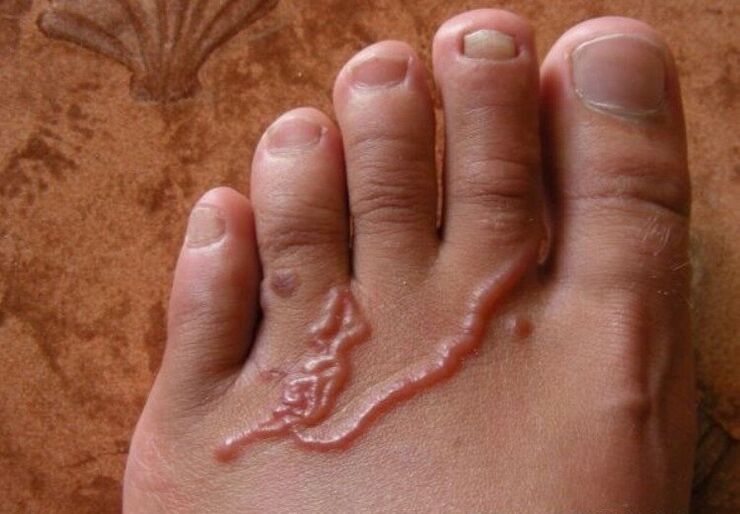
treatment
To date, there are many effective recommendations for the treatment of such diseases. It is important to understand that the doctor should prescribe treatment after receiving the necessary results of a full medical examination of the patient. In some cases, complications and the appearance of accessory diseases caused by helminths are observed.
Important.Complex drug therapy can be prescribed as treatment, but you should be aware that most drugs are very toxic, so you can observe a significant deterioration in the condition caused by treatment.
Surgical intervention is often required to get rid of subcutaneous helminths. Most often, hydrochloric acid and sulfuric soap are used for scabies.
Treating subcutaneous worms can cause many problems and take a lot of time and money. Therefore, it is easier to prevent infection. To do this, all you need to do is adhere to the rules of personal hygiene. It is recommended not to have physical contact with an infected person.
